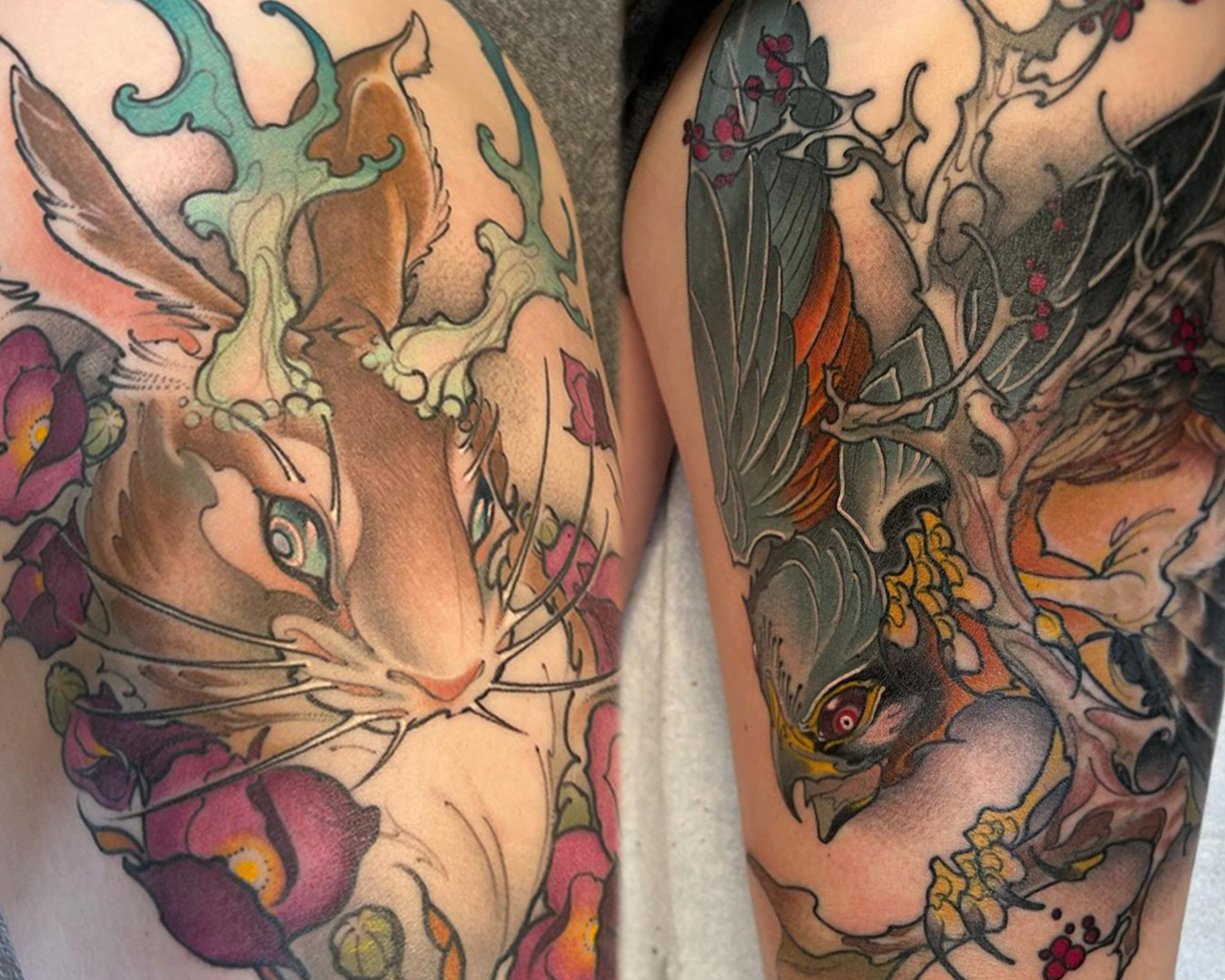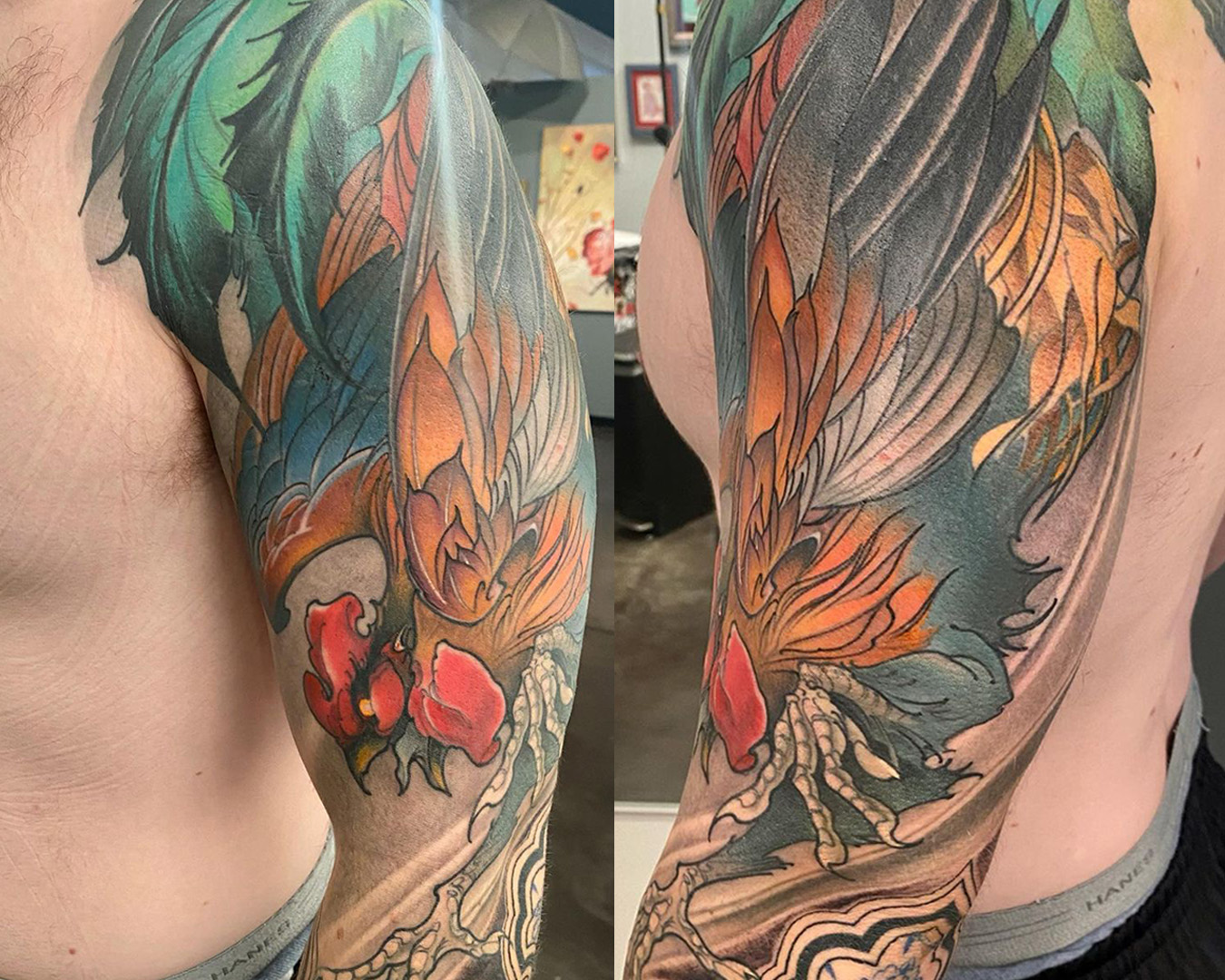Knowing What IS, And Then Starting From There — Corey Bernhardt

Knowing What IS, And Then Starting From There
[14:36] “I’m very conscious of placement on the body and what the tattoo looks like at rest. How does somebody view it? If somebody wants a rooster on their upper arm I’ll invert the rooster, because I don’t want a pair of rooster feet hanging out of someone's sleeve.”
— Corey Bernhardt
Because most people that are getting tattooed today already have tattoos, and people are wanting larger and larger work, it becomes difficult to have untethered freedom to create the perfect sleeve or backpiece for a client. Jeff Gogue has an approach that involves solving problems on a different level by understanding what already exists on a client's body, adopting a mindset of "what is" and then considering "what can be." In doing this Jeff has the ability to better map out and expand on a client's current tattoo situation, and leave room for future collaborations with other artists. Jeff's mastery in tying his work efficiently to the body through narrative also touches on the awareness of placement's impact on the overall composition.
Also, something practical to consider is incorporating factors like clothing choices and the client's lifestyle. Advising a client to take photos in everyday clothes provides a unique perspective on considering composition from the outset. Understanding placement becomes a foundational aspect of composition, offering valuable guidance to artists grappling with the initial stages of design.

Lastly, awareness of element placement and position should also be taken into serious consideration. Try imagining what the tattoo will look like at rest or in different layouts. For example if you have something like a shark or an eagle going on an upper arm or thigh, you might consider a downward position for the layout. Having the shark tail peak out of shorts or a t-shirt sleeve won’t be nearly as interesting as something like the head or the feathers and wing tips of the bird. And swooping those types of animals downwards along the tricep can also compliment the shape of the body very well.
